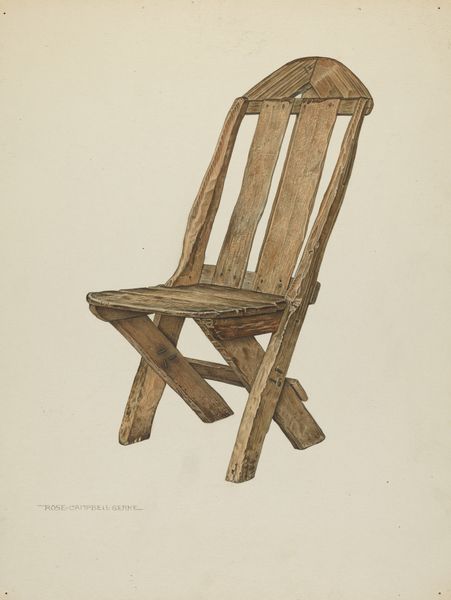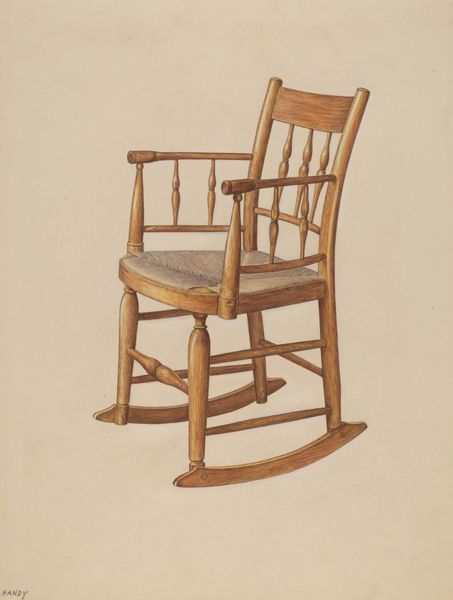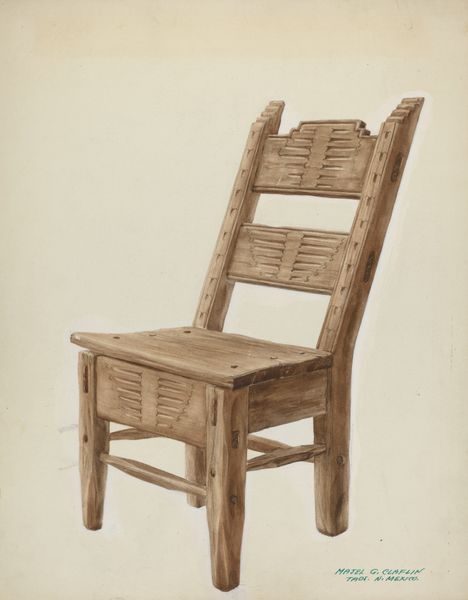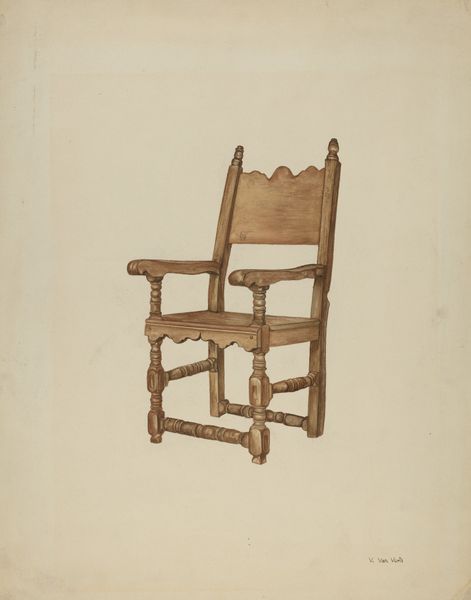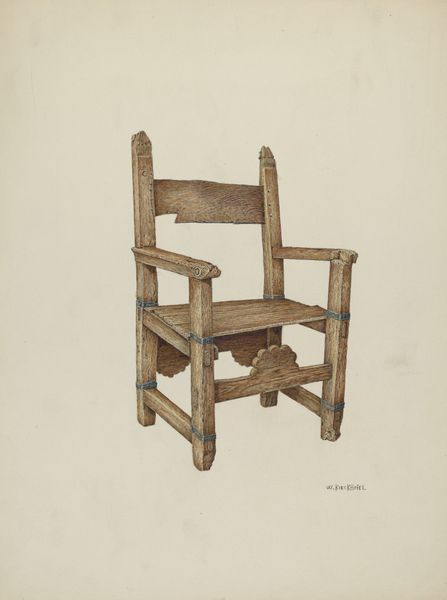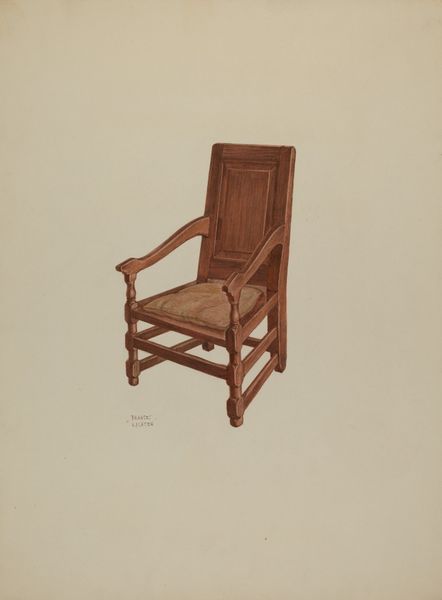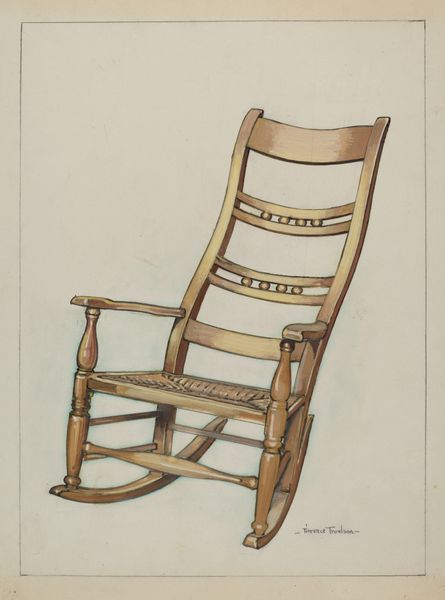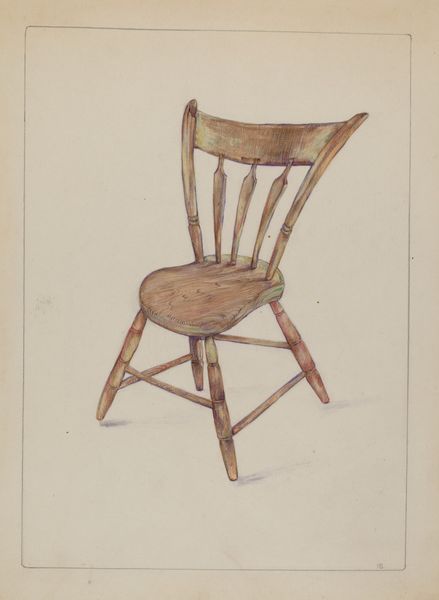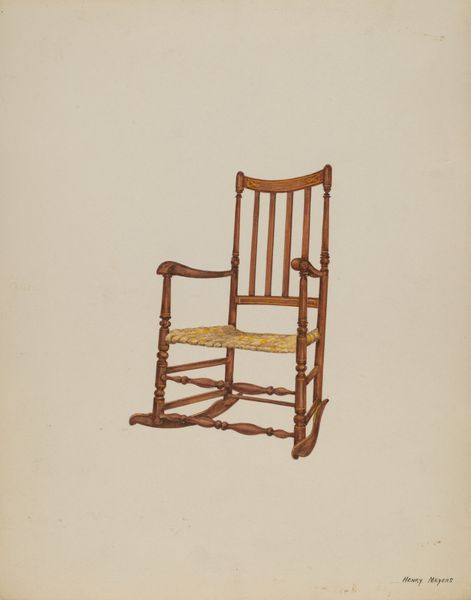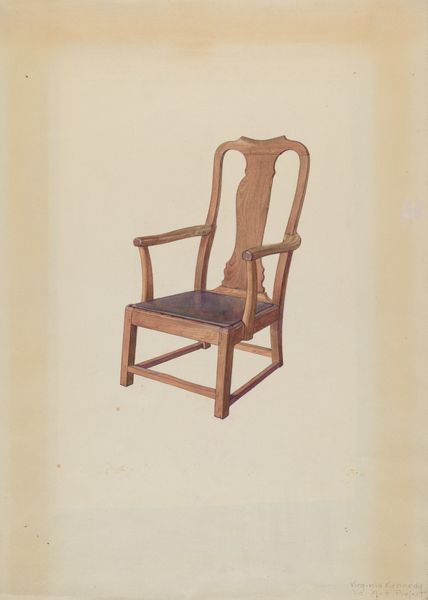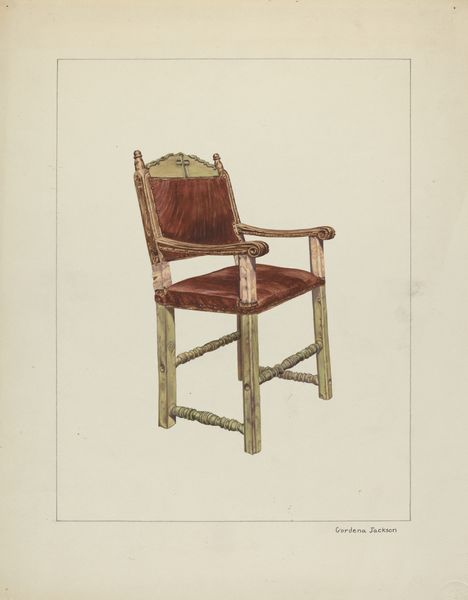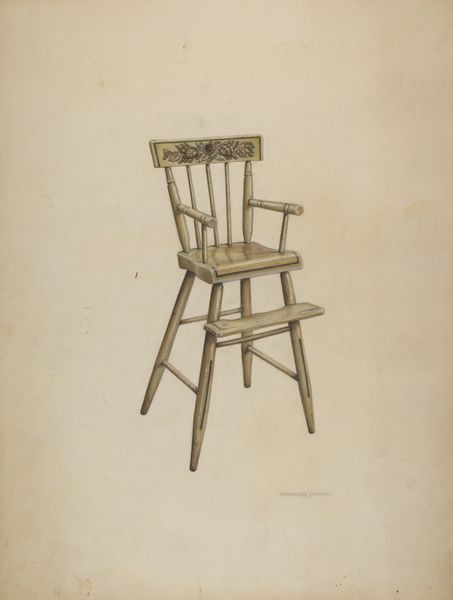
drawing, painting, watercolor
#
drawing
#
painting
#
landscape
#
watercolor
#
watercolour illustration
#
watercolor
#
realism
Dimensions: overall: 37 x 24.3 cm (14 9/16 x 9 9/16 in.)
Copyright: National Gallery of Art: CC0 1.0
Curator: Majel G. Claflin's watercolor and graphite work, "Chair," created circa 1938, presents a rather unassuming subject, wouldn’t you agree? Editor: It evokes a potent feeling of rural isolation, that single, sturdy chair standing against what reads like a bleached, indeterminate backdrop. Curator: Indeed. Let us delve into the visual structure itself. Notice the stark realism, a fidelity to the object’s form rendered through delicate brushstrokes and subtle tonal variations. The planes are defined yet soft, highlighting the geometric composition. The open lozenge shape in the chair back creates a focal point, wouldn't you say? Editor: I see it more as representing the absence. Considering its date, this chair feels like a haunting symbol of the Great Depression. Think of the vacant homes and abandoned spaces that mark such times. This empty seat might speak volumes about lost livelihoods. The use of watercolour seems to add to the atmosphere too, giving it all a transient feel. Curator: The use of watercolour underscores the transparency inherent in the medium. See how it allows the underlying structure, the "skeleton," if you will, of the composition to subtly show through. Claflin exploits the formal properties of line and wash to define the chair’s materiality. It is solid, yet its rendering has a delicate fragility. Editor: Fragility, yes, and also precarity. Wooden chairs like this speak to notions of labor and class, suggesting the exhaustion and quiet resilience of working-class bodies that rest upon them after exhausting physical work. Claflin's realism, in this sense, operates as a document of her time, of class consciousness, during a period of vast socio-economic change. Curator: Interesting perspective. Looking at it purely from an art historical standpoint, her artistic precision draws our attention to the chair itself – a common utilitarian item and gives it elevated status. Editor: The elevation might instead highlight the ordinary struggles of those who might once have occupied this chair. But this interplay only enriches how we receive the work today. Curator: I’ve quite changed my mind. Looking at the structure with new insights allows one to explore new avenues of discovery, so to speak. Editor: Exactly – the work invites us to find new resonance for what might appear conventional on first look.
Comments
No comments
Be the first to comment and join the conversation on the ultimate creative platform.
